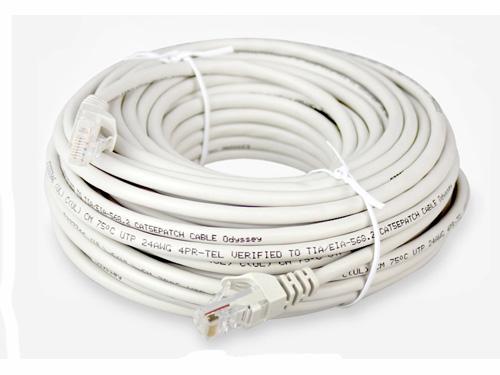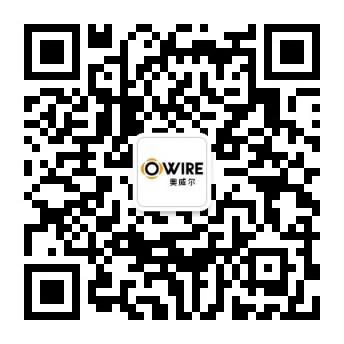Shenzhen Owire Communication Technology CO.,LTD
Tel:+86-0755-89378289
Mailbox:sales5@owire.com.cn
Website:www.owire.com.cn
https://owire.en.alibaba.com
Add:302, Dadi factory building, No.8 Cichang road,Baoan community,Yuanshan street,Longgang district,Shenzhen,China
Network, the most inconspicuous part of the computer network, the most easily ignored parts. In the formation of the network, most people will pay attention to such devices as switches, routers, network cards and other devices, but for network lines, it is generally not too much to be picky. However, with the expansion of the network scale and the increase in the demand for network lines, the importance of network lines is becoming more and more obvious. Next let professional network line manufacturer Orwell take you to understand the basic knowledge of the net line, tell you what kind of net line is good.

Twisted Pair
Twisted pair (TP) is the most commonly used transmission medium in generic cabling engineering. It is generally twisted by two insulated copper conductors 22~26, and the name of twisted pair also comes from it. Its characteristic is that the price is cheap, so it is widely used, such as our common telephone line, etc. It is used to connect with the RJ45 crystal head.
The twisted pair can be divided into unshielded twisted pair wire (UTP) and shielded twisted pair (STP).
The outer layer of shielded twisted pair cable is wrapped by aluminum and platinum to reduce radiation, but it can not completely eliminate radiation. The shielded twisted pair is relatively expensive and difficult to install than unshielded twisted pair cable.
UTP cable has the following advantages: no shielding coat, small diameter, save the occupied space; light weight, easy to bend, easy to install; the near end crosstalk is minimized or eliminated; flame retardant; independence and flexibility, suitable for structured cabling.
The common types of twisted pair lines are as follows:
A class of lines (CAT1): mainly used for transmission of voice (a class of standards used primarily for telephone cables before the beginning of the 80s), unlike data transmission.
The two class of lines (CAT2): the transmission frequency is 1MHZ, which is used for voice transmission and data transmission at the highest transmission rate 4Mbps. It is commonly used in the old token network using 4MBPS specification token passing protocol.
The three class line (CAT3): the transmission frequency 16MHz, for voice transmission and the highest transmission rate of 10Mbps data transmission is mainly used for 10BASE--T, the cable specified in the ANSI and EIA/TIA568 standard.
The four class line (CAT4): the transmission frequency is 20MHz, and the data transmission for voice transmission and maximum transmission rate 16Mbps is mainly used for token based LAN and 10BASE-T/100BASE-T.
The five class line (CAT5): the transmission frequency is 100MHz, which is used for voice transmission and data transmission with the highest transmission rate of 100Mbps, mainly used for 100BASE-T and 10BASE-T network. This is the most commonly used Ethernet cable, which increases the density of the winding, and the coat is a high quality insulating material.
The ultra five line (CAT5e): the transmission frequency is 100MHz, which is mainly used in Gigabit Ethernet (1000Mbps). It has smaller attenuation, less crosstalk, and higher ratio of attenuation to crosstalk (ACR) and StructuralReturn Loss, and smaller delay error. The performance has been greatly improved.
The six class line (CAT6): the transmission frequency is 250MHz, which is most suitable for the application with the transmission rate higher than the 1Gbps, which is mainly used in the Gigabit Ethernet (1000Mbps). The six kinds of twisted pair lines are different from the five or five kinds of twisted pair lines in appearance and structure. They not only increase the cross skeleton of insulation, but also place the four pairs of twisted pair wires in the four grooves of the cross skeleton, and the diameter of the cables is thicker.
The ultra six class or 6A (CAT6A): the transmission frequency is 200~250 MHz and the maximum transmission speed can reach 1000 Mbps, which is mainly used in the Gigabit network. The Super Six line is an improved version of the six class line. It is also a kind of unshielded twisted pair cable specified in the 6 class /E level of ANSI/EIA/TIA-568B.2 and ISO, which has greatly improved in crosstalk, attenuation and signal-to-noise ratio.
The seven class line (CAT7): the transmission frequency is at least 500 MHz, and the transmission rate can reach 10 Gbps, which is mainly adapted to the application and development of the technology of Gigabit Ethernet. The line is the latest type of shielded twisted pair in the ISO 7 class /F standard.
| Network line type | 1 types of lines | 2 types of lines | 3 types of lines | 4 types of lines | 5 types of lines | Super 5 class line | 6 types of lines | Super 6 class line | 7 types of lines |
| Effect | Telephone cable for early 80s | 适用于旧的令牌网 | It is mainly used to support 10M network lines | Used for token LAN and Ethernet use | Suitable for 100BASE-T and 10BASE-T networks | 主要用于千兆位以太网 | It is suitable for networks with higher transmission rates than 1Gbps | It is mainly used in the Gigabit Network | Application of megabit Ethernet Technology |
| Transmission frequency | Relatively low | 1MHZ | 16MHz | 20MHz | 100MHz | 100MHz | 1MHz~250MHz | 200~250 MHz | At least 500 MHz |
| Maximum transmission rate | Relatively low | 4Mbps | 10Mbps | 16Mbps | 100Mbps | 1000Mbps | 1Gbps | 1000Mbps | 10 Gbps |
Super five and six types of net lines
The use of super five and six types of network connections is not different, only the use of the occasion and the cost is different.
The identification of the ultra five lines is "CAT5E", and the bandwidth 155M is the mainstream product at present.
The six type of line is identified as "CAT6", the bandwidth 250M, the six type of unshielded twisted pair can be very good to support Gigabit Ethernet, and the realization of the 100m transmission distance. The six type cabling system is widely used in the wiring of the sub server machine room and the horizontal wiring that is upgraded to the Gigabit Ethernet capability. The six kind of unshielded twisted pair has higher price, but because it has very good compatibility with over five kinds of cabling system, and it can support 1000Base-T very well, so it is becoming the new favorite of generic cabling.
Considering the application requirements of the Internet in the future, the theory should be installed wiring products, the most advanced, because after the cable installation is often difficult to re replacement, basically, a wiring system are at least 10 years as a standard, update performance to support network equipment 4 to 5 generation, if the cable network equipment to meet future needs to improve the speed of data. Then, with six kinds of cables instead of super category five cable is inevitable, but the re establishment of cable engineering is very expensive, so even if the six types of products relative to the price of over five products is slightly more expensive, but in order to reduce the number of days after the network upgrade, six products are still worth considering.
Coaxial Cable
A coaxial cable (Coaxial Cable) refers to a cable with two concentric conductors, while the conductor and the shielding layer share the same axis. The most common coaxial cable consists of insulated copper conductor. Inside the insulating layer is another layer of ring conductor and its insulator. Then the whole cable is covered by PVC or Teflon sheath.
Optical Fiber Cable
Optical fiber cable is manufactured to meet the performance specification of optics, machinery or environment. It is a communication cable assembly which uses one or more optical fibers placed in the cladding sheath as a transmission medium and can be used individually or in groups. Optical fiber cable is a certain number of optical fibers, which form a cable core according to certain ways, which is wrapped outside the sheath, and some are covered with outer sheath to achieve optical signal transmission.


Weixin
Shenzhen Owire Communication Technology CO.,LTD
Tel: +86-0755-89378289
Mailbox: sales5@owire.com.cn
Website:http://www.owire.com.cn https://owire.en.alibaba.com
https://owire-fiber.en.alibaba.com
Add: 302, Dadi factory building, No.8 Cichang road,Baoan community,Yuanshan street,Longgang district,Shenzhen,China
